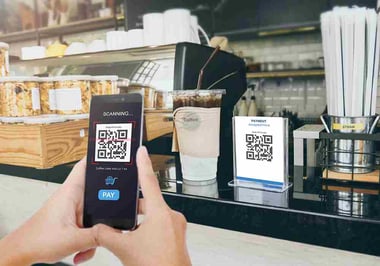One of the fastest growing economies in Southeast Asia, the Philippines, known to be a traditionally cash-heavy nation, has made significant strides in the digital transformation of its payment landscape.
Currently, the country is undergoing a significant shift towards digital payments, fuelled by a combination of COVID-19 and governmental initiatives. Growing digitalisation, supported by the country’s internet-savvy young population, contributes immensely to the nation’s growth. Google, Temasek, and Bain & Co. report forecasts the Philippine internet economy to more than double to US$40 billion by 2025 from $17 billion in 2021.
This blog focuses on the most popular payment methods in the Philippines and the looming financial crime threats related to digital payments. We will also explore how sophisticated technology can help payment services companies tackle such threats while complying with the required AML regulations.
Cash and Over-the-Counter Payments
Despite the growth of many alternative payment methods, cash accounts for most payments in the Philippines. This is mainly due to the country’s geography, encompassing more than 7,000 dispersed islands and many unbanked or underbanked populations. Merchants accept cash over the counter and facilitate cash-on-delivery (COD) options.
Bank Transfers
With the National Retail Payment System (NRPS) launch in 2015, the country enabled better and smoother B2B payments. The NRPS created two automated clearing houses – PESONet and InstaPay – facilitating easy and fast fund transfer between any two accounts in the country. While PESONet replaces cheque usage in governments and businesses, InstaPay enables smaller person-to-person (P2P) cash transactions. InstaPay volume and value reached 43.3 million and P284.2 billion, respectively, as of June 2022, compared to 37.1 million and P213.2 billion in June 2021, according to official statistics. PESONet volume and value reached 7.3 million and P548.1 billion as of June 2022, compared with 4.3 million and P362.5 billion a year ago.
BSP National Quick Response (QR) Code Standard
Launched by the BSP and the Philippine Payments Management, Inc. (PPMI), the National QR Code Standard (QR Ph) enables person-to-person (P2P) transfers and person-to-merchant (P2M) payments. QR payments adoption multiplied during the COVID-19 pandemic. P2P transactions via QR Ph stood at 527,800 worth P5.4 billion at the end of April 2022, growing by 171.7% in volume and 252.5% in value year on year. The P2M facility is now available in over 473,000 merchant outlets nationwide. The BSP also signed an agreement with the Monetary Authority of Singapore (MAS) in November 2021 to integrate both countries’ QR payment systems. This made cross-border payment flows between the countries instant, seamless and affordable.
Digital wallets
Digital wallets are virtual wallet apps installed on mobile devices that allow users to store payment card information and enable payments for purchases. Some digital wallet providers allow users to transfer money from their bank accounts to e-wallets and use the stored money for online and in-store payments. The number of mobile wallet users in the Philippines is estimated to reach 75.5 million in 2025, compared to 24.6 million in 2020, according to Statista. GCash, Maya Bank, Coins PH, GrabPay, PayPal, BPI Direct BanKo, Moneygment, and DragonPay Credits are some of the leading mobile wallet providers in the country.
Buy Now, Pay Later (BNPL)
Primarily meant for online shoppers, Buy Now, Pay Later (BNPL) is also known as point of sale installment loans. It is a form of short-term financing that allows consumers to pay for their purchases later in time, mostly without interest. Users can break up purchase amounts into smaller installments without a credit card. BNPL is gradually growing in the Philippines in line with the growth of its e-commerce sector. According to a survey, the Philippines’ BNPL payment is expected to grow by 109.7% year on year to $803.5 million in 2022. Between 2022 and 2028, the payment space is expected to have a compound annual growth rate of 50.9%.
The Need to Be Safe and Compliant
The United Nations Conference on Trade and Development recommended that the country updates its legal frameworks to boost the e-commerce sector. The sector requires constant updating of laws and regulations related to e-transactions, consumer protection, and financial crime.
In line with its vision for the Philippines to become a digital-heavy, cash-light society to help achieve inclusive growth, The Philippine central bank, Bangko Sentral ng Pilipinas (BSP), has been striving to provide an enabling environment. The BSP is conscious of the financial crime risks within the country and is working with the Anti-Money Laundering Council (AMLC) to create strategies to get out of the FATF grey list.
With a rise in suspicious transactions during the pandemic, the central bank tightened requirements for licenses such as Electronic Money Issuer (EMI) and Operators of Payment Systems (OPS). Fintech companies now require efficient and effective Anti-money Laundering/Counter Terrorist Financing (AML/CTF) measures, apart from other corporate governance requirements.
Learn More: Compliance Challenges for Payment Companies
Tookitaki Helps Payment Companies Stay Compliant
Today's world of sophisticated cyber-enabled money launderers calls for cutting-edge technology and innovative solutions. Compliance departments rely on modern technologies such as artificial intelligence and machine learning to fight financial crime.
Tookitaki’s AML solution helps financial institutions strengthen their risk coverage and mitigate risks seamlessly in the ever-evolving world of regulatory compliance. Built on BigData, Anti-Money Laundering Suite or AMLS extensively uses machine learning for its transaction monitoring, smart screening, and customer risk scoring solutions. The alerts from all solutions are unified in an interactive, modern-age Case Manager that offers companies speedy alert disposition and easy regulatory report filing.
Tookitaki prides itself in bringing to life “The AML Ecosystem” - a first-of-its-kind initiative that is community-driven and powers financial crime prevention. The ecosystem is a combination of Tookitaki’s network of people and our library of typologies. The “Hub and Spoke Approach” for transaction monitoring completely encompasses holistic AML coverage, faster deployment, lesser false positives, and seamless AML operations.
The ‘Hub’ is an extensive and evolving collection of the latest intelligence on money laundering patterns sourced from AML expert networks globally in a privacy-preserved manner. The ‘Spoke’ represents a simulation setup and allows local companies to download and test relevant patterns from the Hub, detect illicit money trails, and stay protected. The Spoke is installed within the environment of a financial institution without letting the test data leave the network, thereby providing utmost security.
The AML network is based on a deep democratisation approach that allows everyone in the anti-money laundering field to collaborate and combine expertise to combat financial crime in a single network ecosystem.
Talk to our expert to learn more about our AML solution and how Tookitaki can be your partner of choice for enhancing risk-based AML compliance programmes.
Anti-Financial Crime Compliance with Tookitaki?
.png?width=250&height=104&name=PNG%20-%20Montserrat%20LOGO%20-%20a%20Thunes%20company%20(White).png)
-1.png?width=200&height=83&name=PNG%20-%20Montserrat%20LOGO%20-%20a%20Thunes%20company%20(White)-1.png)



